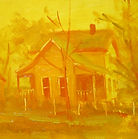
Different types of colours
Below are breif descriptions of the different types of colours found in modern colour theory. These descriptions are to better help you understand some of the terminology that is used frequently in colour theory.

primary colours
red, yellow, or blue

Secondary colours
opposite colour on a schematic chart or scale (color wheel)
green opposed to red, orange opposed to blue, violet opposed to yellow.
http://dictionary.reference.com/browse/complementary%20color

tertiary colours
Any colour that can be produced by mixing two secondary colours.
Brown is a secondary colour.

complementary colours and schemes
the relationship of these pairs of colors perceived as completing orenhancing each other.
http://dictionary.reference.com/browse/complementary%20color?s=t

analogous colours and schemes
Any one of a group of related colors that are near each other on the color wheel. Red, orange, and yellow are analogous colors.

monochromatic colours and schemes
(Monochrome)
Many different shades of a single color.
Dark(est) blue, Dark blue, medium blue, light blue and lighter blue would be an example of a simple monochromatic colour scheme.
http://dictionary.reference.com/browse/monochrome?&o=100074&s=t
Educators: This was included because the different shades, types and tones of colours are a key aspect of understanding modern colour theory. If students understand this key aspect, using colour theory in their work will become easier for them.
